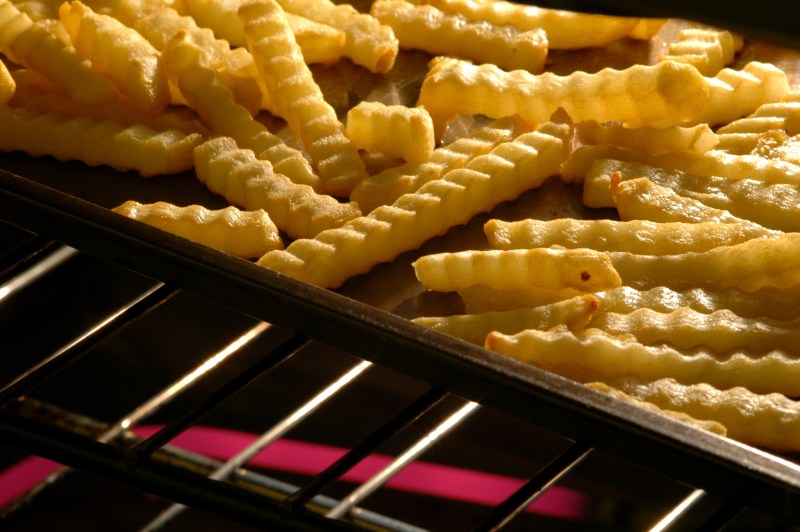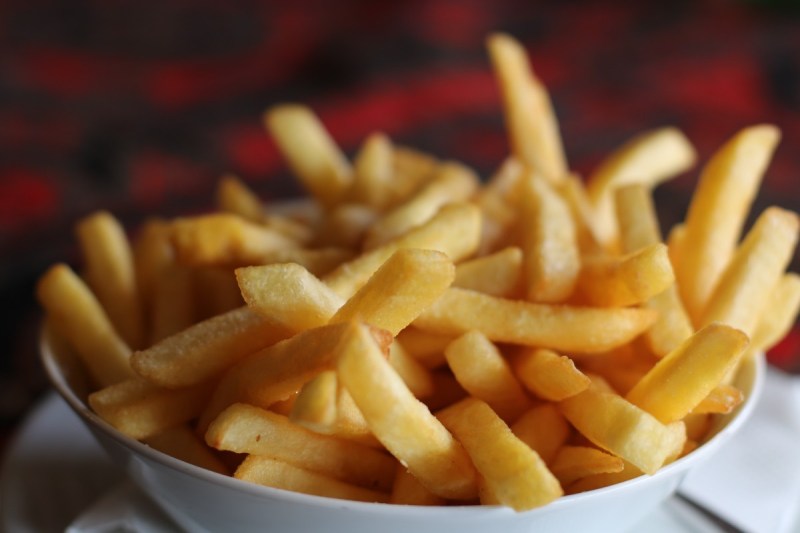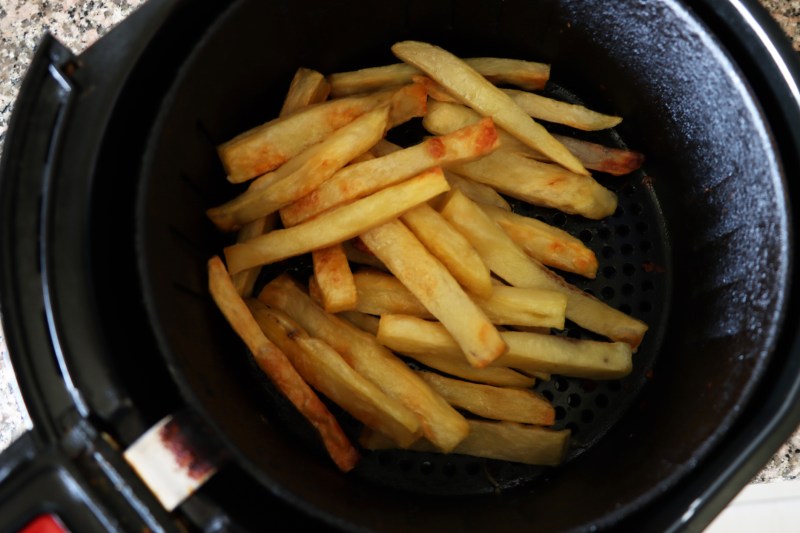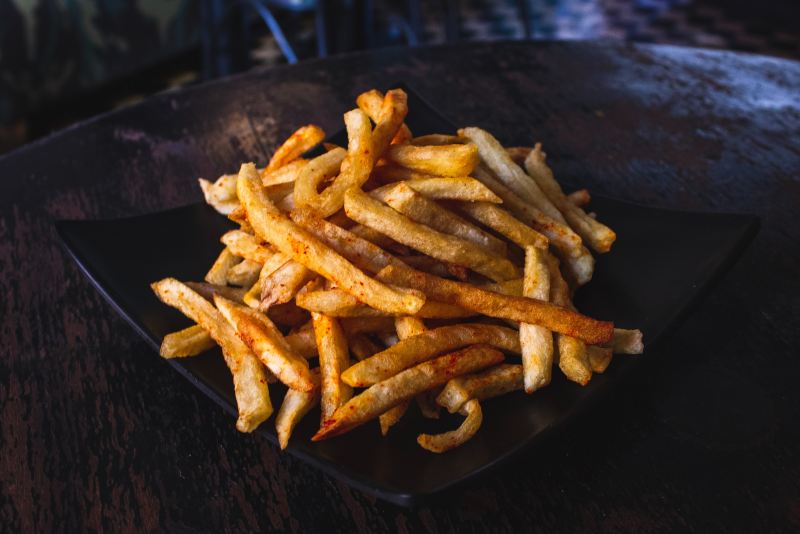
It’s universally accepted that the potato is the world’s best comfort food. Its thousands of applications and culinary contributions are nothing short of astonishing, and it is to be praised. But let’s be honest. Even if the potato’s only gift to the world was French fries, it would still be worthy of the crown. There’s just nothing better than a French fry.
The problem with French fries, though, is that it’s hard to reheat them without ending up with a weird, flabby, soggy mess. Of course, French fry leftovers are a rare thing, but it can happen. So if you find yourself with leftovers that you want to reheat, it’s important to choose the right cooking technique, so they can be just as tasty as the first time. So let us show you how to reheat fries the right way, but first, a brief history lesson.
French fries: A brief history
Did you know French fries have been a popular food ever since they were invented back in the late 1600s? Though originally a Belgian creation, French fries got their name from American soldiers who were stationed in a francophone region of Belgium during World War I. French fries have taken the world by storm to become one of the most popular foods of all time. OK, the history lesson is over, let’s move on to showing you how you should be reheating fries.
How do you revive leftover fries?

Everyone has different preferences when it comes to enjoying popular foods like French fries. Though many people love a crispy French fry, others savor the taste of a floppier texture. It doesn’t matter if you prefer them crispy or not, there are many great ways to reheat fries to deliver the taste you enjoy.
We recommend reheating leftover French fries using a:
- Microwave
- Oven
- Air fryer
- Stovetop
The best way to reheat fries depends on what equipment is available in your kitchen and how you like your fries. If you don’t really care about crispiness, then it’s easy and efficient to reheat your fries using a microwave. For those that prize a crispy fry, we recommend using the air fryer or oven.
How to reheat fries in the microwave

Fries reheated in the microwave are usually less crispy than fries reheated using other methods. If crispiness is your goal, we recommend using a different method. That said, when you want fries reheated as quickly as possible, the microwave is a good choice.
Follow these steps to reheat fries in the microwave:
- Allow the fries to reach room temperature.
- Very lightly dampen one to three pieces of paper towel using water.
- Place the fries on a plate and layer them with moistened paper towels.
- Microwave for 20 seconds.
- Check your fries.
- Eat and enjoy or continue microwaving for 20-second intervals until you reach your desired temperature.
Not all French fries or microwaves are created equally. French fries that are cut very small will need less time than those cut into wedges for instance. Always keep an eye on the foods that you are reheating.
How to reheat fries in the oven

Fries reheated in the oven tend to be crispier than fries reheated in a microwave. If you love a nice crispy fry, we recommend that you try using your oven to reheat next time. The oven takes a bit more time than the microwave but delivers more consistent results.
Follow these steps to reheat fries in the oven:
- Allow fries to reach room temperature.
- Preheat oven to 400 degrees Fahrenheit
- Place parchment paper or aluminum foil on a baking sheet.
- Layer fries evenly on the baking sheet.
- Back for 5 minutes or until fries reach your desired crispiness.
- Remove from the oven and enjoy.
Once you get the hang of reheating foods using the oven, you will find that it delivers superior texture and flavor to most other reheating methods. Keep in mind that ovens with a convection setting will be more powerful than normal ones. Always keep a close eye on foods that are being reheated in the oven.
How to reheat fries in the air fryer

Many consider the air fryer to be the best way to reheat fried foods. Air fryers work great, but many people don’t own one. If you enjoy fried foods like fries, it’s definitely worth considering investing in a quality air fryer
Follow these steps to reheat fries in the air fryer:
- Allow fries to reach room temperature.
- Preheat your air fryer to a temperature of 300 degrees Fahrenheit.
- Air fry your fries for 3-6 minutes.
- Remove from the air fryer and enjoy your fries.
The air fryer is becoming more and more popular. Many people love using this method because it delivers such a reliable way to revive leftover fried foods. You will be able to take your leftover fries to the next level with an air fryer.
How to reheat fries on the stovetop

While all the above methods are great ways to reheat your French fries, some people swear by using a skillet on the stovetop to bring those fries back to life. Like all of our other methods, it’s a fairly simple process, and it will lead to a delicious plate of fries.
To reheat fries on the stovetop, just follow these steps:
- Heat a skillet over medium-high heat. Do not use any oil in the skillet, the fries themselves will have enough oil on them to do the job.
- Put the fries in the pan and stir and flip them for about 3-5 minutes.
- When your fries are at the level of crispness you’re looking for (cooking times will vary depending on the cut of the fries), take them out of the skillet and enjoy.
If you have a lot of fries (lucky you!), don’t overload the skillet. Reheat them in batches so they can stay in a single layer in the pan, this will keep them from getting soggy.
Now, pass the ketchup!



